The Island of primates – Ngamba Island Chimpanzee Sanctuary
To quote Arthur C Clarke, humanity will be judged on how we behave towards other intelligent creatures of his own world. And with regard to Chimpanzees, we are faring quite poorly. Chimpanzees are our closest living relatives and we share 98.7% of our genes with them. However, humans have been very cruel to them resulting in the decline of half of the wild population of Chimpanzees in the last 50-60 years. Habitat loss, hunting for bushmeat and the exotic pet trade are amongst the greatest threats facing this species. As per estimates, no more than 200-300,000 individuals remain in the world. Significant populations exist only in some countries in Sub-Saharan Africa. Ngamba Island Chimpanzee Sanctuary is one small hope that we, as a dominant species, are capable of compassion and are able to think of the well-being of our fellow creatures beyond the narrow confines of our self-interest.
About Ngamba Island Chimpanzee Sanctuary
An Island in Lake Victoria, Ngamba Island Chimpanzee Sanctuary was conceptualised in 1998 as a safe haven for orphaned and rescued Chimpanzees. The Chimpanzee Trust procured on lease an island about 1 sq km (100 hectares) lush with tropical rain forests for this purpose. The Island is about an hour’s journey from the mainland Entebbe.
Approximately 95% of the Island is chimpanzee habitat and 5% is set aside as an eco-friendly village, veterinary facility and eco-lodge facility for tourists.
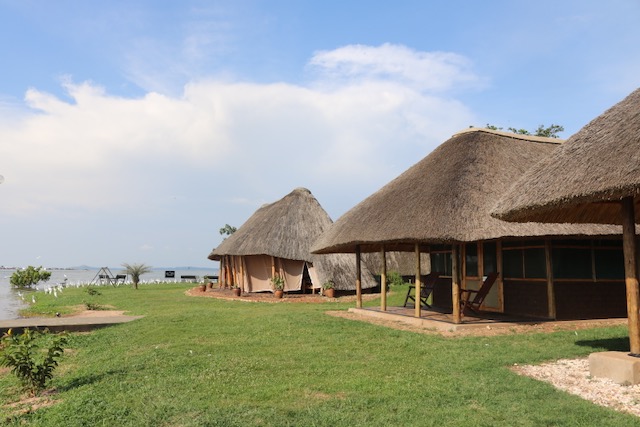
A haven for rescued Chimps
Ngamba Island is currently home to 49 orphaned and confiscated chimps, rescued from the illegal pet and bushmeat trade. The Chimps range in years from the newly born to 33 years old. Despite their initial trauma, Chimps living at Ngamba have a safe and semi-natural environment in which to recover and eventually thrive over their long lives of up to 60 years (in captivity).
In addition to providing for the Chimpanzees food on a daily basis, Ngamba Sanctuary provides specialised healthcare. It also helps integrate the Chimp orphans in a social group, so that they can live out their lives with other Chimpanzees.
Chimps as Ambassadors
The Chimpanzees of Ngamba serve as ‘ambassadors’ for their species. The Sanctuary provides a platform for educating people – tourists and locals alike, about our nearest wild relatives and the urgent need to protect their forest homes.
Tourists to the Island have the opportunity to observe the Chimpanzees up close – especially during the designated feeding times. Interacting with the caregiver / guides and having the time to discover more about the wonderful world of Chimpanzees was truly an amazing learning experience for me. I would remain indebted to Joseph – my guide and one of the caregivers, for being patient enough to explain all my questions throughout my stay at Ngamba.
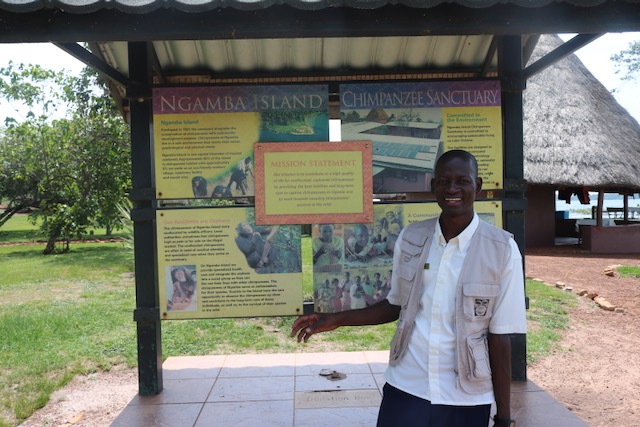
An additional but important objective of the Sanctuary is research. Though not in a wild environment, the proximity helps research in learning more about the social and individual behaviour of Chimps. One can also participate in this project by becoming a volunteer at Ngamba Island.
Reintroduction to the wild?
An unstated long term goal of the Sanctuary is to reintroduce some of the Chimps back into the wild. However, selecting areas suitable for reintroduction and also the challenge of rewilding the Chimps are major obstacles. The Chimps have undergone considerable trauma prior to Ngamba and are now dependent on humans. Getting them to adapt to the wild is surely a significant challenge.
How the Sanctuary works?
The Chimps on Ngamba live in a ‘semi-natural’ environment. Which means that while they spend the day in the thick rain forest, they are regularly fed (at designated times) and they retire to the holding area for the night. The night stay area is comfortable with hammocks and grass / leaves.
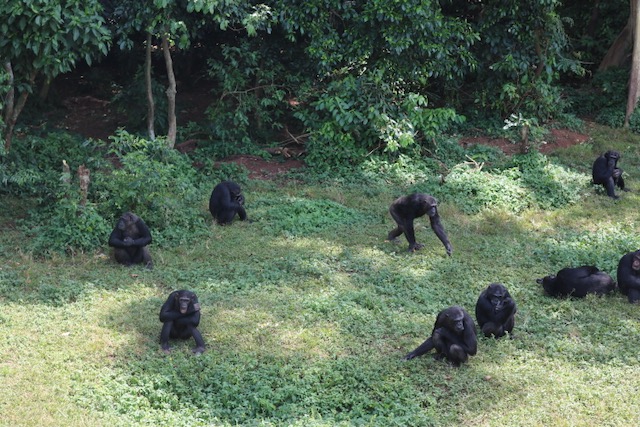
Why would the Chimps not be self-sufficient in the forest and why do they have to retire to the holding area (i.e. cages) for the night?
These are obvious questions. The answer is that the forest area is way too small to sustain a population as high as this. There is simply not enough natural food available. The chimps get only 5% of their food from the Island forest – balance of their nutrition is provided by the Sanctuary.
As for the night stay: Chimps in the wild make their ‘sleep nests’ by breaking branches / leaves on trees. They also tend to be highly mobile travelling many kilometres each day resulting in the behaviour of making a new ‘nest’ every night. Allowing the Chimps to stay the night in the small forest area would decimate the forest soon enough due to this simple behaviour of making daily nests in different places! In the wild, they move continuously. Hence, the forest gets time to regenerate – but no such possibility on a small island!
Physical interaction with Chimps
There is no ‘physical interaction’ between humans and the Chimps. An electric fence ‘protects’ the Chimps from the human areas. The caregivers may physically interact at times. But this is kept to the bare minimum and only if essential. In fact, many of the chimps are so traumatised that they hate humans despite the long period of care given by their caregivers.
Population control
The Sanctuary is meant for Orphans and rescued individuals. Living in a group, the population is bound to soon go out of control. The Sanctuary attempts to control this by using modern methods of contraceptive control. However, there are some accidents like the delightful Ruparelia and Eazy! (both are young chimps born in the sanctuary).
Feeding the Chimps
Providing food on a regular basis to the Chimps is a major task of the Sanctuary staff. Chimps need to eat about 10% of their body weight on a daily basis. The Chimps are fed three times in a day. In addition, the caregivers have to ensure that the Chimps get balanced and ‘nutritional’ food.
Mornings: Posho or Ugali made from Maize flour for the carb intake.
Afternoon: Fruits (including vegetables)
Evening: Millet based porridge (for the protein) – quite popular among the residents!
Visitors to Ngamba can witness or even participate in the feeding process from a viewing platform (behind the electrified fence).
Chimpanzees at Ngamba Island Sanctuary
One of the core values practised at the Sanctuary is treating each Chimpanzee as an ‘individual’. Each Chimpanzee is a different individual with his / her own characteristics, personality and likes / dislikes – just like humans. The Sanctuary has made brief profiles of each inhabitant mentioning their distinct personalities and history.
Check it out on https://ngambaisland.org/chimp-profiles/sunday/

The stories of the Chimps history can be quite unnerving. E.g. Sunday (profile above) was rescued from a circus. He was castrated with the objective of ‘quietening’ him down. However, it had the opposite effect on Sunday and this trauma increased his hatred for humans. Till date he remains wary of even his caregivers.
It is wonderful to realise and see the differences between the Chimps – both in physical characteristics and their behaviour. Joseph pointed these out to us – some of them are naughty, some are bullies, some are greedy, some are smarter than the others, some are shy, some are quite social! Some chimps refuse to submit to the authority of the clan leader and hence lead solitary lives in the holding area. The children are an absolute joy! Watching their antics is a pleasure – equally for the caregivers and the visitors.

My favourite individuals were Ruparelia (youngest of the lot), Eazy (baby), Sunday (Lanky and tall), Tumbo (calm food lover), Natasha (mischievous and popular) and Indi (quite independent!).
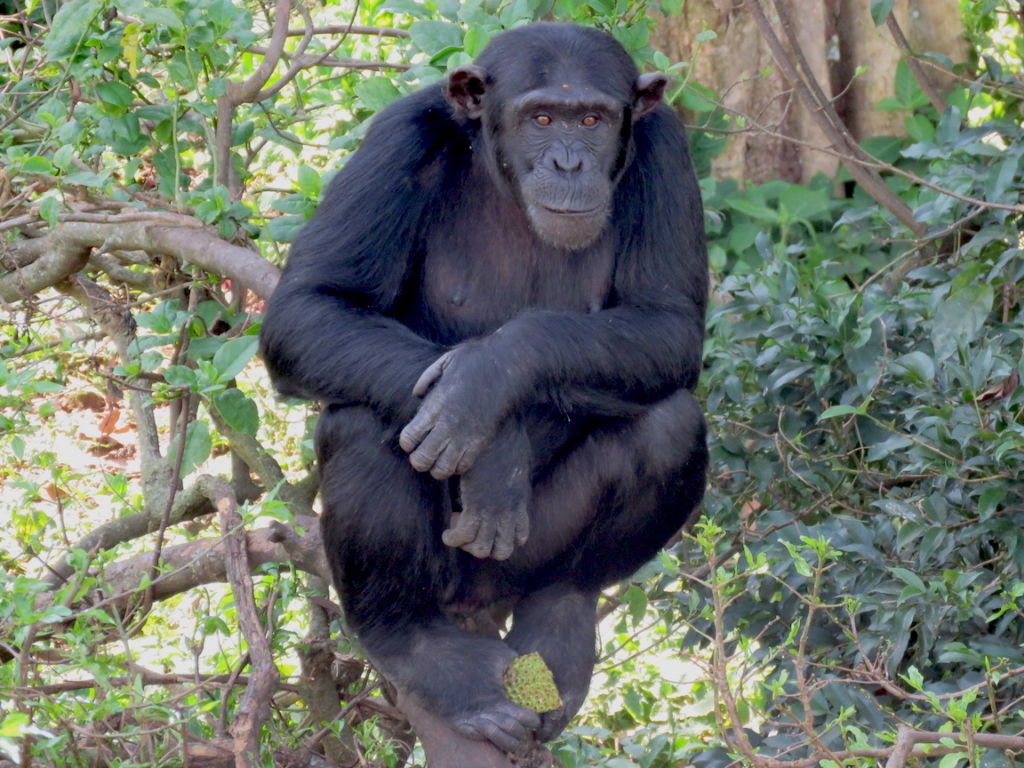
Visitors to the Sanctuary
Tourism is the main source of income to sustain the Sanctuary and the well-being of the Chimps. Visiting Ngamba is a way (albeit small) of our contribution to this noble effort by the Chimpanzee trust.

There are broadly two ways of experiencing Ngamba: As a day visitor and as an overnight guest. The day visits would coincide with the morning / afternoon feeding time allowing guests the opportunity to see all the Chimps come out near the feeding area. The chimpanzees can be spotted very closely and clearly from the viewing platform.
Overnight Stay
However, I would personally prefer the overnight visit: You can participate in 4 feeding sessions and have the time to enjoy Lake Victoria and explore the ‘human’ section of the Island. Numerous birds, otters, crocodiles, monitor lizards and the local cat all provide for an excellent lazy wildlife viewing day! In addition, the overnight stay allows you the time to interact with the caregivers and learn a lot more about the Chimpanzees including some quirky stories. E.g. the time when Sunday learnt the use of boats and stole one in his failed endeavour to escape the Island!
Staying overnight also allows for additional experiences e.g. Sunset cruise, boat ride to feed the chimps from the water, fishing trips, cultural visits to the nearby island villages and night-time bonfires. And yes, the facilities for guests is top class and the food – mouth-watering! The quality of hospitality is superb and way beyond expectations!
Chimpanzee tracking in the wild vs visit to Ngamba
A visit to Ngamba cannot be compared to the experience of seeing the Chimps in the wild (at Kibale, Budongo in Uganda or in Nyungwe, Rwanda). The electrified fence at Ngamba is a bit of a dampener! However, watching and learning about the Chimps behaviour during the feeding times and having the luxury of time to listen to the knowledgeable caregivers – allows a unique opportunity to learn a lot about these very interesting primates!
It is quite amazing to observe the Chimps distinct personalities, interactions and group dynamics. Such close observations (with a lot of input from your guide) may simply not be possible in the wild during Chimpanzee tracking. E.g. I would have never known about tantrums thrown by Ruparelia or the camaraderie amongst some individuals while sharing their food!
It is also possible to notice how intelligent chimps are. Watching a Chimp using pieces of stick to pull pieces of food away from the electrified fences is a revelation!
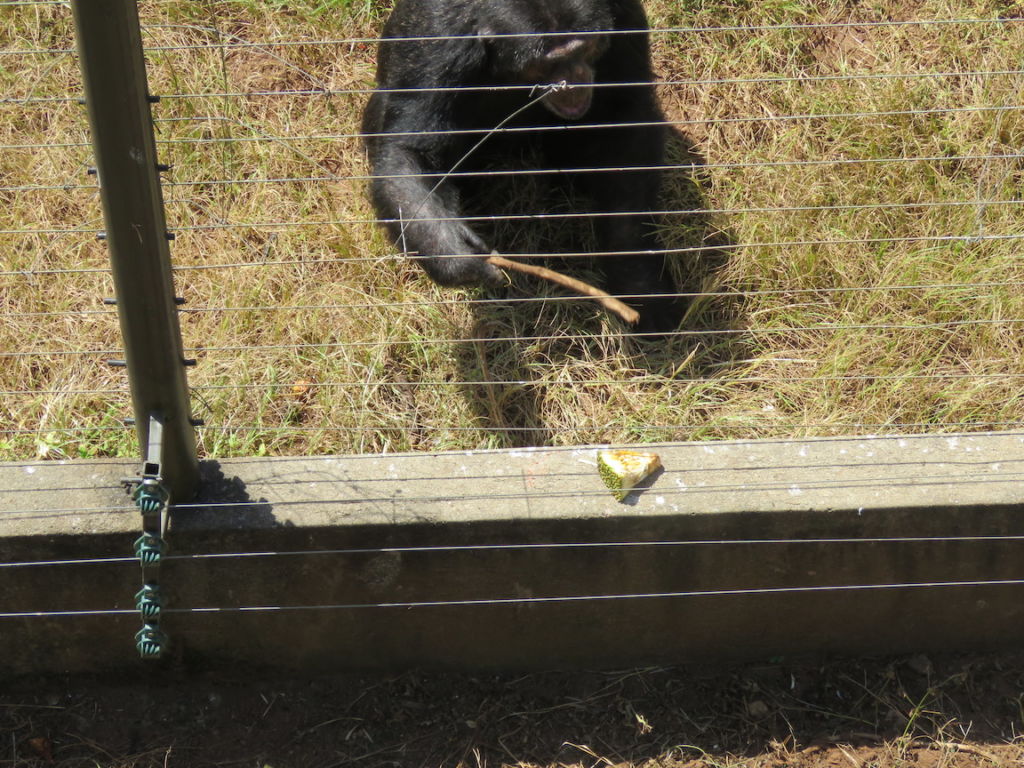
To end: A couple of notes
Exclusivity vs Mainstream tourist experience
The cost of going to or staying at Ngamba Sanctuary can be a very expensive proposition. The day trip can cost nearly $ 325 / person, while the overnight stay option would cost anywhere between $ 600 to $ 750 / person. Undoubtedly, this is beyond budget for most of us. Since there is limited space, one argument could be that keeping the Island ‘exclusive’ is key to maximising contribution to this noble effort.
However, my argument would be that the ‘education’ objective is also critical. Only if more and more people visit the Sanctuary will achieve this objective. This is possible only with more reasonable prices. While I would not argue for ‘mass’ tourism, at least lowering the threshold price and increasing the number of accommodation units from 4 to at least 8 – without increasing the ‘human’ space (5% of the island) should be easily possible. This way both the objectives can be met – maximum contribution as well as more education. I can only request the Chimpanzee trust to seriously consider this proposition!
New Friends
Like most of my memorable experiences, making new friends is generally an important part. I met this lovely couple – Nancy and Bill from Canada. Bill is a doctor and they had come to Uganda to spend some time with a relative / friend, who is doing some valuable charitable work near Mt Elgon National Park. Would cherish the conversations I had with this nice couple, who obviously have a zest for life and travel. Hope to meet them again, somewhere sometime!
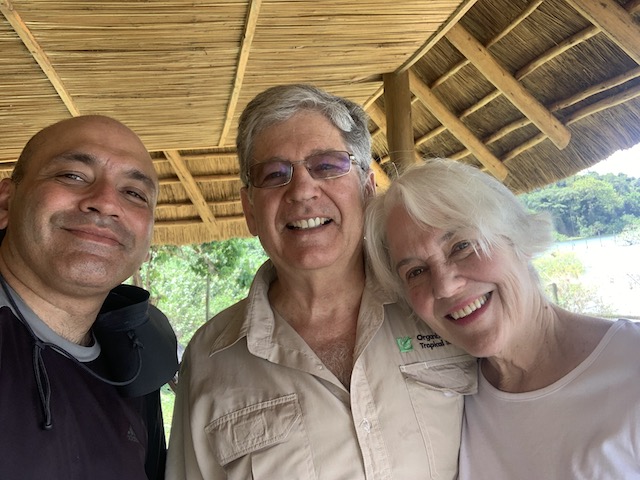
Links and Sources
Video on Ngamba
Lovely article including a video
https://edition.cnn.com/2017/07/25/africa/ngamba-chimpanzee-island-uganda/index.html
About Chimpanzees


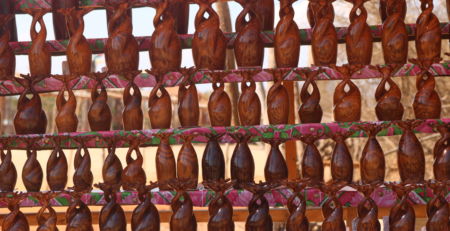


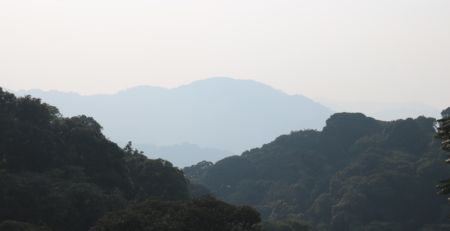


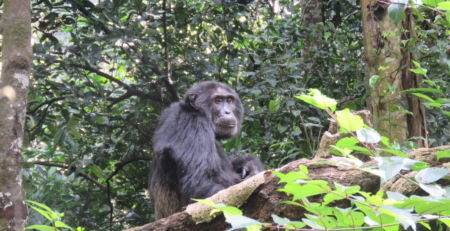

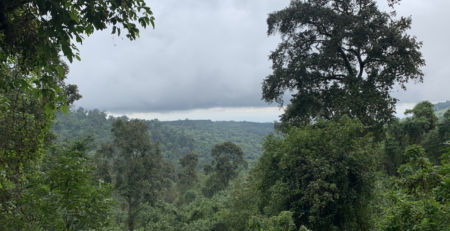
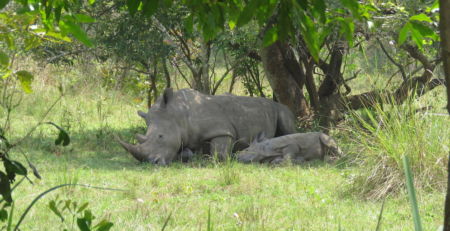
Comment (1)
What else should i add on, Shenoy summarized everything about Ngamba island. All i can say, if you read this blog, visit Ngamba island to support the initiative.